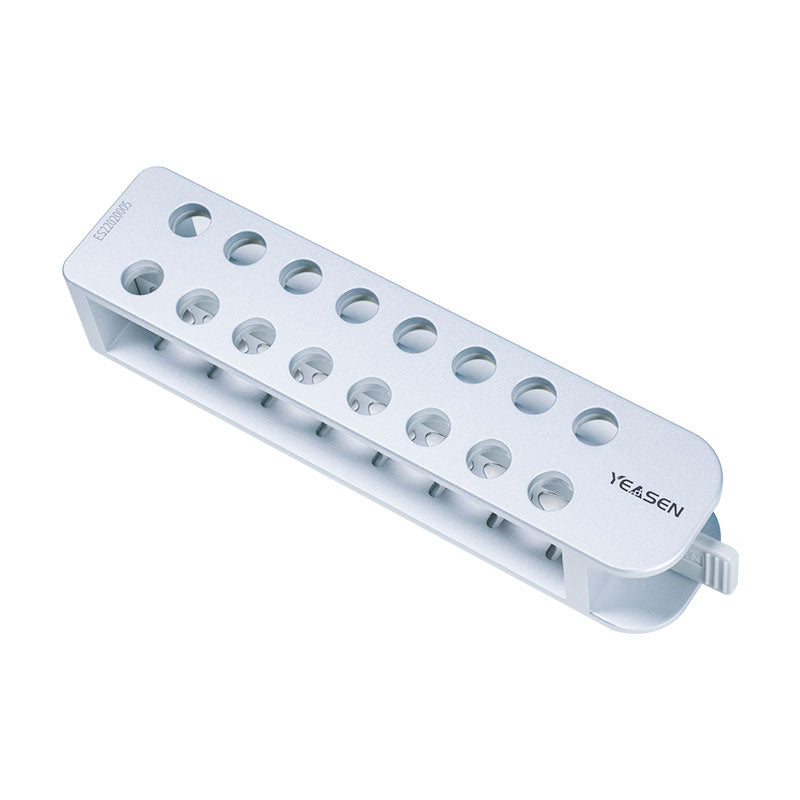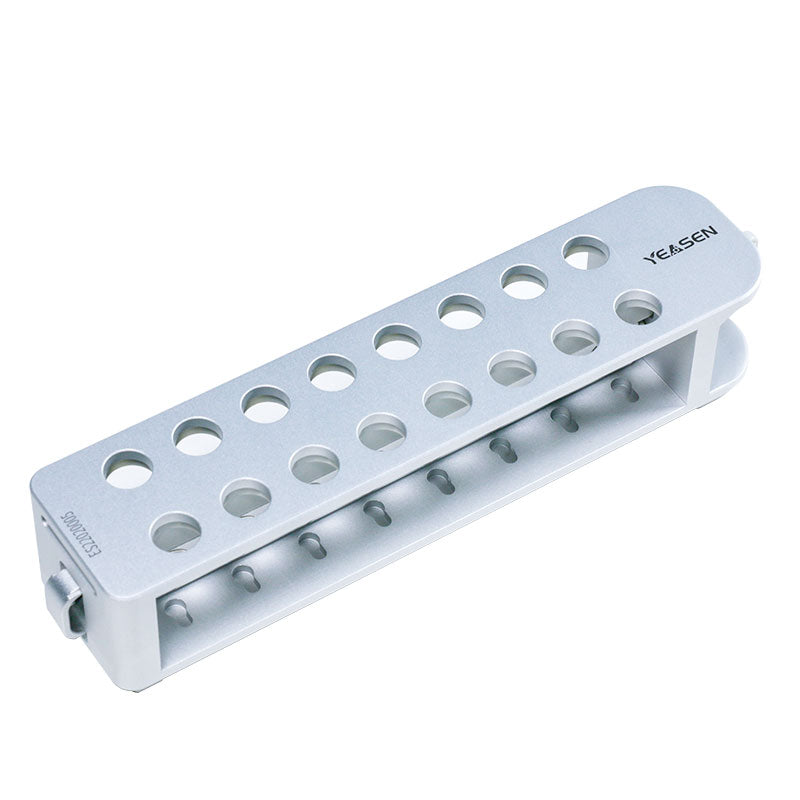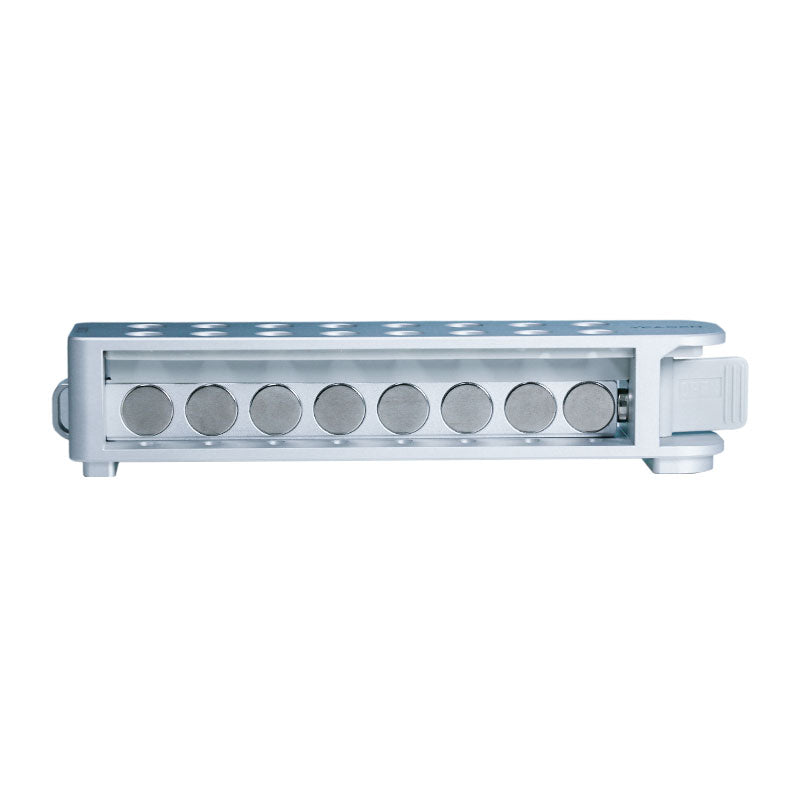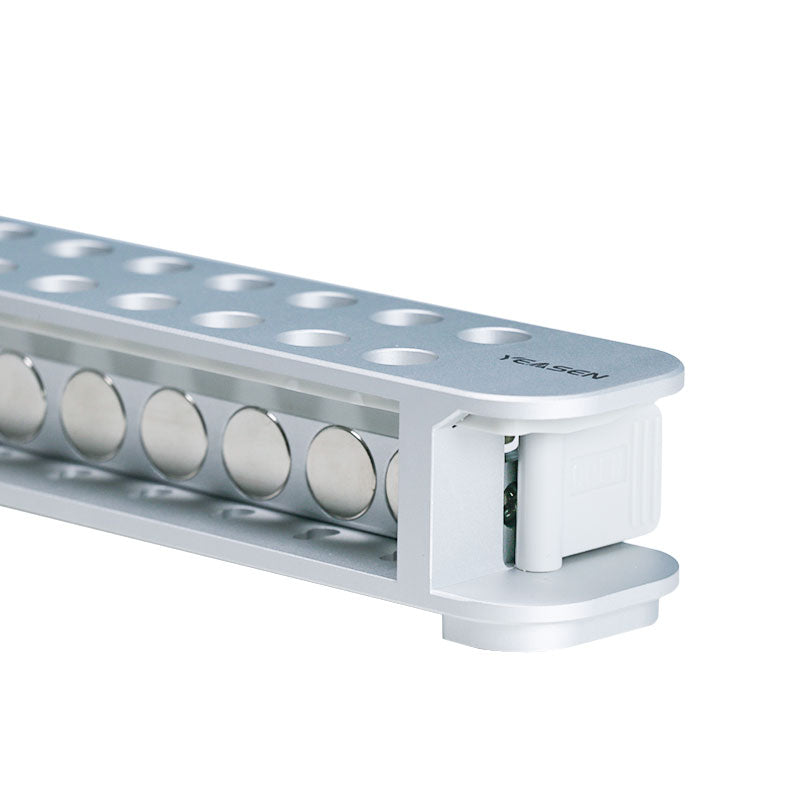描述
2 mL metal magnetic stand perfectly fits 1.5/2.0 ml microcentrifuge tubes. With a stronger magnetic force, it can not only be used for separation of nucleic acids or proteins with the magnetic bead method, but also especially recommended for experimental procedures such as separation & purification and fragment sorting of nucleic acid samples in the process of NGS library construction.
Instructions
Change the status of the stand between "OPEN" and "LOCK" by turning the switch. When the status is at "OPEN", the microcentrifuge tubes are loose and can be put in or taken out freely. When the status is at "LOCK", the microcentrifuge tubes are fastened and locked for sample mixing.
Notes
Polyacrylamide gel electrophoresis (PAGE or SDS-PAGE)Do not autoclave the 2 mL metal magnetic stand. Wipe by a clean cloth with water or gentle cleanser if necessary.
Please use in a dry environment with a temperature lower than 50℃ to ensure good results. If the Stand has been put in a low-temperature environment (e.g. -20℃), please use it only after it returns to room temperature. Low temperature may weaken the magnetism.
Components
|
Components No. |
Name |
80461ES03 |
|
80461 |
2 mL metal magnetic stand |
1 Set |
Shipping and Storage
Transport at ambient temperature, store at room temperature.
Figures

Documents:
付款和安全
您的付款信息已安全处理。我们无法存储信用卡详细信息,也无法访问您的信用卡信息。
询问
你也可能喜欢
常问问题
The product is for research purposes only and is not intended for therapeutic or diagnostic use in humans or animals. Products and content are protected by patents, trademarks, and copyrights owned by Yeasen Biotechnology. Trademark symbols indicate the country of origin, not necessarily registration in all regions.
Certain applications may require additional third-party intellectual property rights.
Yeasen is dedicated to ethical science, believing our research should address critical questions while ensuring safety and ethical standards.




